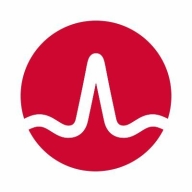

Symantec Endpoint Security and Microsoft Defender for Endpoint compete in the security software category. Microsoft Defender for Endpoint seems to have the upper hand due to its seamless integration with Windows OS, enhancing functionality and user experience.
Features: Symantec Endpoint Security offers comprehensive protection through features such as intrusion prevention, device control, and support for multiple operating systems. It also provides extensive management capabilities. Microsoft Defender for Endpoint provides integrated security across Microsoft platforms and excels in real-time threat detection, offering seamless integration with the Windows operating system.
Room for Improvement: Symantec users have reported high resource consumption and slow scans, leading to system sluggishness. The management interface can be cluttered, becoming overly complex. Additionally, enhancements are desired in virus detection against zero-day threats and cloud integration. Microsoft Defender for Endpoint experiences criticism for lacking third-party integration and cumbersome administration portals, leading to demands for better reporting, customization, and faster technical support.
Ease of Deployment and Customer Service: Symantec requires on-premises deployment, noted for resource-heavy infrastructure demands. Microsoft Defender offers flexibility with cloud and on-premises options, promoting smoother integration within Microsoft ecosystems. While Symantec's support has fluctuated, Microsoft's support is perceived as less responsive, needing enhancements in threat analysis and integration updates.
Pricing and ROI: Symantec tends to be more expensive with extra support costs despite offering robust features, providing a good ROI when aligned with security benefits. Microsoft Defender is included with Windows, offering competitive pricing within the Microsoft E5 bundle, appealing to organizations in the Microsoft ecosystem. Although enterprise features can be costly, it provides a high ROI through comprehensive coverage for Windows users.
Without detection and protection measures, organizations would face substantial payments and reputational damage, including the necessity to inform customers about data breaches, potentially leading to loss of business.
We have seen a return on investment when using Microsoft Defender for Endpoint, as it saves labor by reducing the need for staff to focus on it.
The biggest return on investment for me when using Microsoft Defender for Endpoint is the time saving.
Symantec Endpoint Security filled gaps in our toolset, particularly with the ability to control network firewall on hosts remotely, which was greatly appreciated.
The level-one support seems disconnected from subject matter experts.
I rate Microsoft support 10 out of 10.
Due to our size, we don't have access to direct technical support, but the knowledge base, Microsoft Learn, and the articles available are really good.
In some cases, it rates as high as ten out of ten, while in others, it can be as low as eight.
There is no support in the German language, which is a problem for many public tenders.
We managed to scale it out in a short amount of time, with two months of planning and three months of implementation on 10,000 computers.
Microsoft Defender for Endpoint is scalable enough to handle various devices across environments, whether they are laptops, Android devices, or operating in hybrid environments.
Compatibility is its main feature.
Symantec Endpoint Security is quite scalable, and it is very important for large clients.
The scalability of the servers is good, as it requires computational powers.
I haven't seen any outages with Microsoft.
I rate Defender 10 out of 10 for stability.
Defender for Endpoint is extremely stable.
I have encountered issues where I had to uninstall and reinstall the product on end users' computers to view the logs again.
Previously, we used to have multiple servers such as GUP servers and numerous servers for pushing updates, but we reduced it and transitioned almost 30,000 devices to CrowdStrike, which was easy to manage.
Repeated interactions are necessary due to Level One's lack of tools and knowledge, hindering efficient problem-solving and negatively impacting our experience with Microsoft support.
In contrast, competing products offer reduced pricing for long-term commitments, which makes it difficult for us in that environment.
We use Microsoft partners to help govern the platform, and as part of an alliance, we want to gather data from each tenant and combine them for a complete view.
Device management is not very good and I am not enabling it in my organization due to security reasons.
I would like to see improvements in the scanning part of the solution, specifically to enhance the CPU and hard disk usage during scanning and updates to prevent disruption during work hours.
It is cumbersome to use, particularly in handling firewall management.
Given our extensive Microsoft licensing, transitioning to Defender for Endpoint did not affect licensing costs.
It costs $15 per VM for the P2 plan, which is seen as affordable for customers.
The pricing, setup, and licensing were very easy and simple.
It seems to be half the cost or more affordable than other solutions.
The pricing is very low compared to other companies like SentinelOne and others.
I rate the pricing, setup cost, and licensing around nine out of ten.
Defender for Endpoint's coverage across different platforms in our environment is pretty good. We have devices running Linux, Mac OS, Windows, iOS, and Android. It covers all of them.
Microsoft Defender for Endpoint provides a unified management interface allowing customers to manage their on-premises and hybrid infrastructures from a single pane.
One of the best features of Microsoft Defender for Endpoint is its database for identifying zero-day attacks or malware attacks.
Symantec Endpoint Security offers many valuable features, such as file explosion, application learning, DLP, injection detection, and EDR solutions for traffic control.
The incident response capabilities allow me to resolve authentication and support issues promptly, ensuring the system operates without downtime.
One important feature is the EDR function, necessary for many public customers due to upcoming laws in Germany, which is available through Symantec Endpoint Security Complete.
| Product | Market Share (%) |
|---|---|
| Microsoft Defender for Endpoint | 9.9% |
| Symantec Endpoint Security | 3.6% |
| Other | 86.5% |


| Company Size | Count |
|---|---|
| Small Business | 79 |
| Midsize Enterprise | 34 |
| Large Enterprise | 87 |
| Company Size | Count |
|---|---|
| Small Business | 69 |
| Midsize Enterprise | 32 |
| Large Enterprise | 62 |
Microsoft Defender for Endpoint is a comprehensive security solution that provides advanced threat protection for organizations. It offers real-time protection against various types of cyber threats, including malware, viruses, ransomware, and phishing attacks.
With its powerful machine-learning capabilities, it can detect and block sophisticated attacks before they can cause any harm. The solution also includes endpoint detection and response (EDR) capabilities, allowing organizations to quickly investigate and respond to security incidents. It provides detailed insights into the attack timeline, enabling security teams to understand the scope and impact of an incident.
Microsoft Defender for Endpoint also offers proactive threat hunting, allowing organizations to proactively search for and identify potential threats within their network. It integrates seamlessly with other Microsoft security solutions, such as Microsoft Defender XDR, to provide a unified and holistic security approach. With its centralized management console, organizations can easily deploy, configure, and monitor the security solution across their entire network.
Microsoft Defender for Endpoint is a robust and scalable security solution that helps organizations protect their endpoints and data from evolving cyber threats.
Symantec Endpoint Security is a robust and reliable product that provides complete protection against viruses, malware, Trojans, and malicious files. It offers application and device control, ease of use in deploying and updating, a central control console, stability, scalability, auto-discovery capabilities, patch management, endpoint detection and response capabilities, intrusion detection module.
The Symantec Global Intelligence Network (GIN) provides threat intelligence and detection across endpoints, email, and web traffic. It has helped organizations reduce downtime, increase productivity, and improve security posture. Symantec Endpoint Security is easy to use, has a flexible administration, and offers more value than expected.
We monitor all Endpoint Protection Platform (EPP) reviews to prevent fraudulent reviews and keep review quality high. We do not post reviews by company employees or direct competitors. We validate each review for authenticity via cross-reference with LinkedIn, and personal follow-up with the reviewer when necessary.